At the October 2016 project kickoff meeting for Water Street Tampa, the architects, landscape architects, engineers, planners, and consultants gathered in that Florida Gulf Coast city to hear what the client imagined for 56 underutilized waterfront acres sandwiched between downtown and the Garrison Channel. The visionary behind this proposed development was Jeff Vinik, businessman and owner of the hockey team, the Tampa Bay Lightning, who had started acquiring property around the Amalie Arena, where the Lightning play, in 2010. Occupied primarily by surface parking lots, the land was to be developed by Strategic Property Partners (SPP)—a joint venture between Vinik and Cascade Investments. At that meeting, as Rick Cook, founding partner of COOKFOX Architects recounts, Vinik painted a picture of a mixed-used district that would depart from the typical car-centric planning of the region. The lively and densely built precinct would have tree-shaded boulevards with generous sidewalks, ground-floor retail shops and eateries, and inviting open spaces, all of which would be a draw for people who work or live there and for visitors.
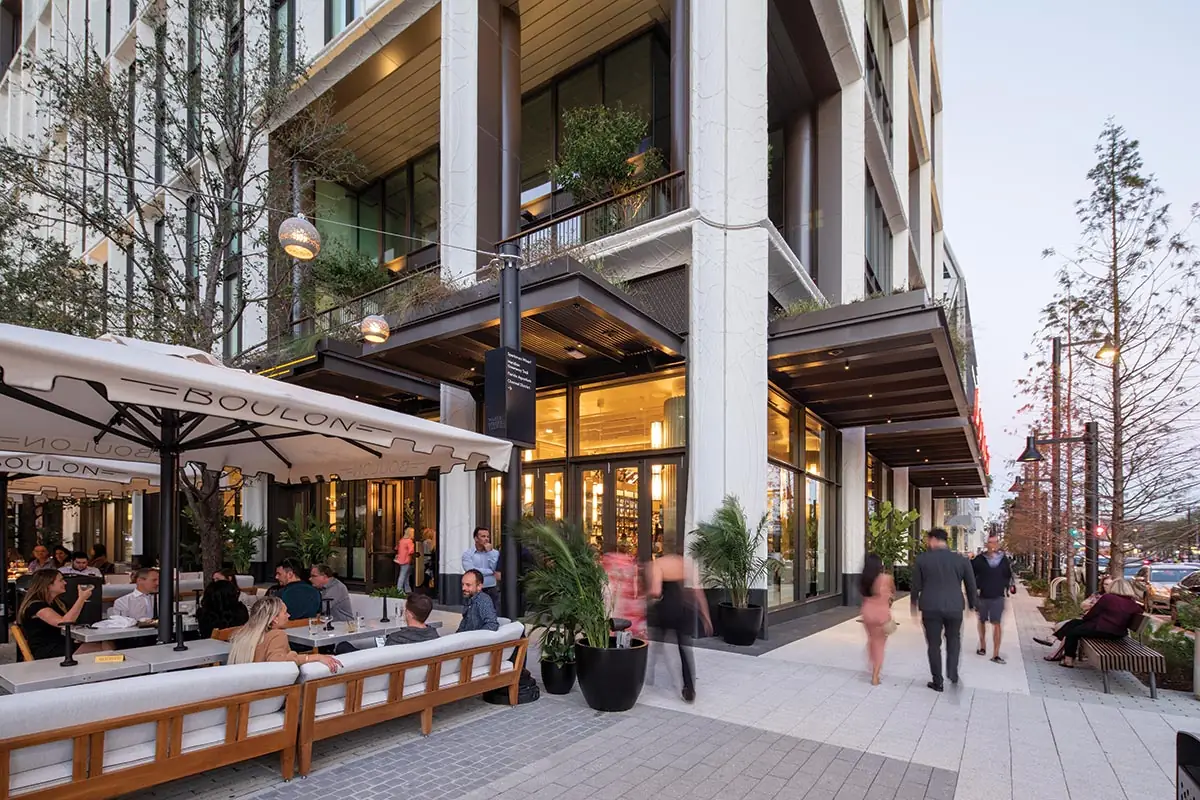
Both buildings include ground-floor shops and eateries whose activity spills out into the public realm. Photo © Robin Hill, click to enlarge.
Fast-forward to the present: this neighborhood has begun to take shape. COOKFOX’s two projects—the Cora, a 388-unit residential building, with apartments that range from studios to three bedrooms, and Thousand & One, a 404,000-square-foot office block, are now complete. Both are part of Water Street Tampa’s Phase 1, finished late last year. It encompasses 12 buildings, more than 1,500 new and renovated hotel rooms, 1,300 residential units, 600,000 square feet of office space, and a medical school facility for the University of South Florida. All have been designed by an impressive roster of architects, which includes—in addition to COOKFOX—Kohn Pedersen Fox, Morris Adjmi Architects, and HOK.
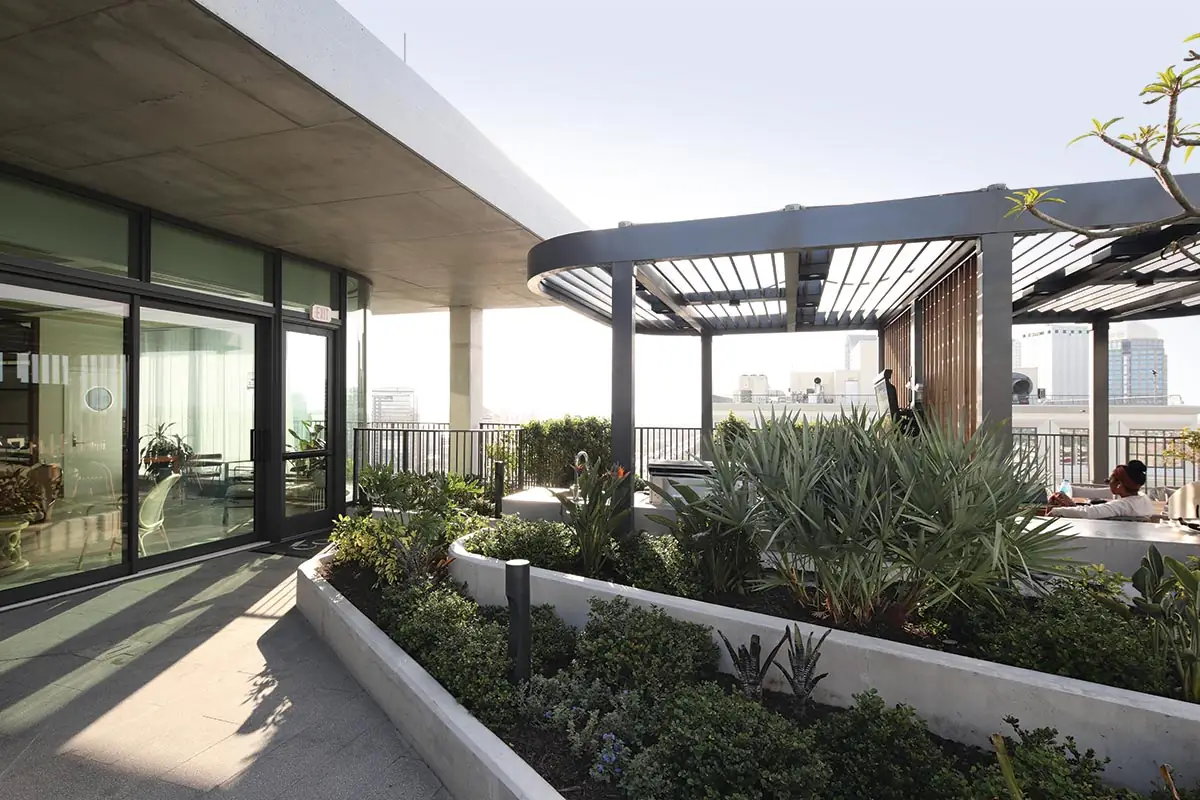
1
Greenery is incorporated into both building’s outdoor areas, including Cora’s rooftop (1) and Thousand & One’s “verandas” (2). Photo © Robin Hill
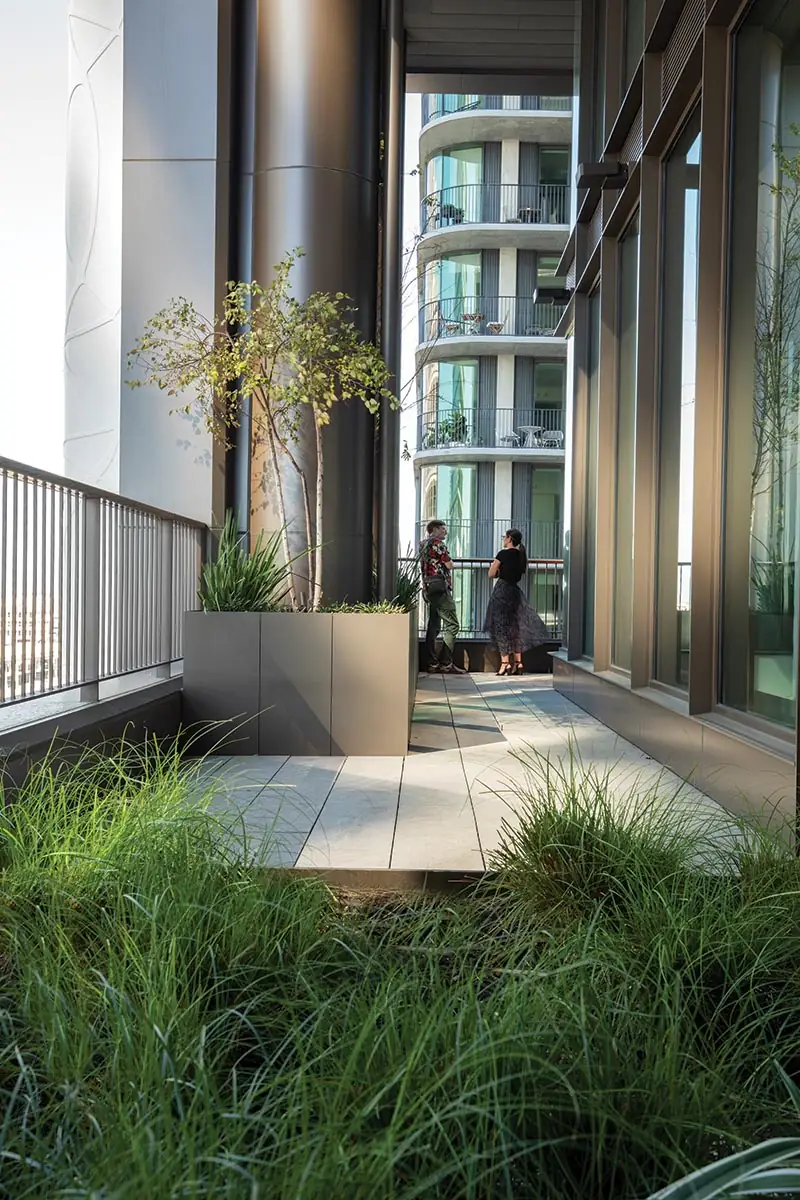
2
Water Street Tampa is the country’s first WELL Gold–certified community. It has also earned a LEED for Neighborhood Development Silver certification. Features intended to promote health, like a centrally located grocery store, strategically placed water-bottle-refilling stations, and outdoor programming for its 13 acres of public space, such as yoga classes and farmers’ markets, contribute to the development’s WELL status. Key to both ratings is the neighborhood’s walkability, as is the development’s centralized district cooling plant, which is 30 to 40 percent more efficient than individual building mechanical systems, according to SPP. But the plant provides other advantages, such as reductions in noise pollution. Many of the features that helped the development earn its LEED and WELL certifications also enhance resilience. For instance, the cooling plant is designed with redundant power systems to prevent storm-induced outages. Other critical building infrastructure is elevated to help it withstand flooding. The landscape also plays a water-management role: “Much of the public realm is designed to capture stormwater and return it to the ground in a measured way,” explains David Manfredi, CEO of Elkus Manfredi, which designed the master plan in collaboration with landscape architect Reed Hilderbrand.
The COOKFOX buildings have clearly embraced the district’s planning concepts: both have retail space at the base, deep overhangs to shield pedestrians and building occupants from the blazing central-Florida sun, and a profusion of greenery—not only on the ground plane, but on building ledges, canopies, and rooftops. Cook, whose own office in midtown Manhattan is known for its lush planted terrace, jokes, “we never saw a horizontal surface we didn’t want to put a garden on.”
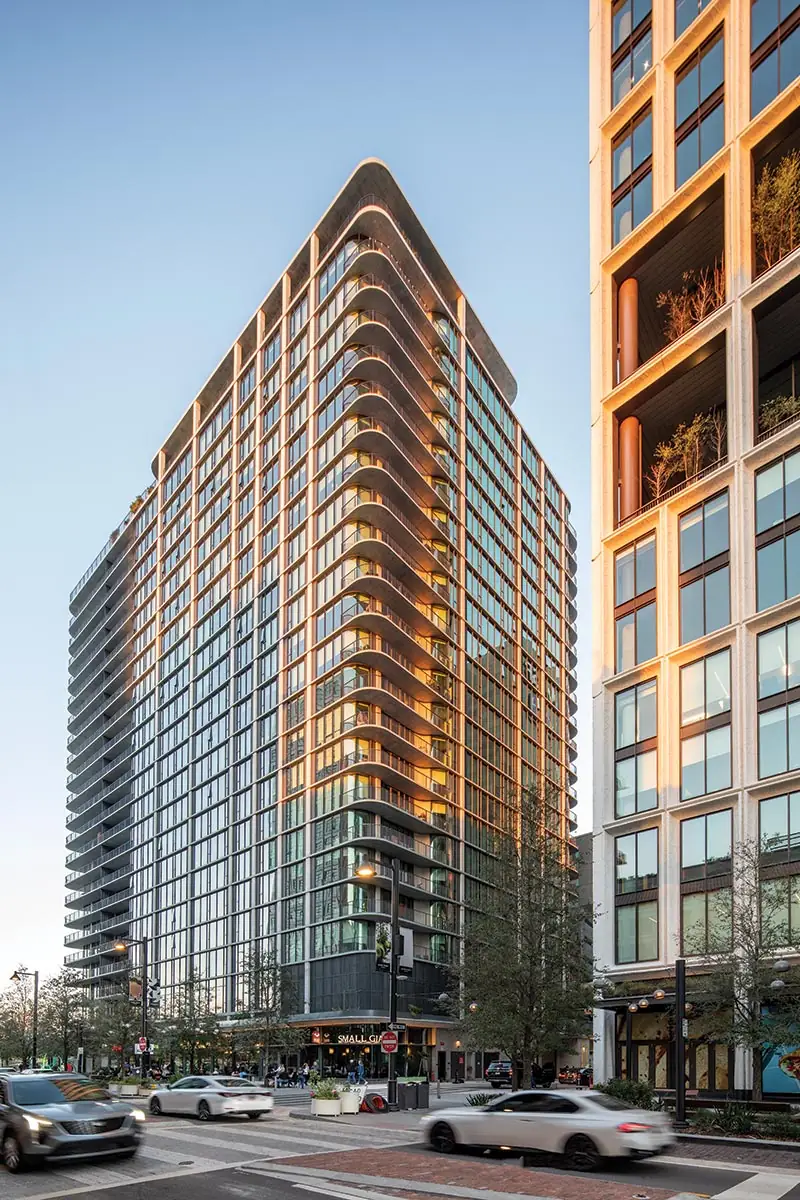
Thousand & One has emphatically gridded elevations (top of page), while the Cora (above) has softer, rounded edges. Photo © Robin Hill
Though the Water Street COOKFOX buildings share DNA, they each have their own unique expression. Thousand & One reads like a 20-story extruded rectangle with emphatically gridded facades. In certain spots, however, this prismatic volume, supported by a post-tensioned, poured-in-place concrete structure, has been carved out to create double-height sheltered outdoor spaces, which the architects refer to as “verandas.” There, office workers can informally meet, eat lunch, or simply take a break. The Cora, also with a structure of post-tensioned concrete, has a softer aesthetic. Its apartment terraces are projecting slabs, seemingly very thin, that wrap the building’s corners, their rounded edges creating an effect reminiscent of Miami Art Deco buildings of the 1930s.
Both Cora and Thousand & One have other refinements that put them well above the usual developer-led commercial or multifamily project. The grid of the office building facades, for instance, is made of sculpted precast elements that measure 30 inches from the face of the concrete to the glazing, creating deep shadows and visual interest. The components are further articulated with a subtle relief pattern inspired by the entangled root system of the mangrove—a native tree essential to the coastal ecosystem. At Cora, meanwhile, the corner insulated glazing units are curved, like its projecting balconies, allowing for uninterrupted views that include the downtown and surrounding waterways.
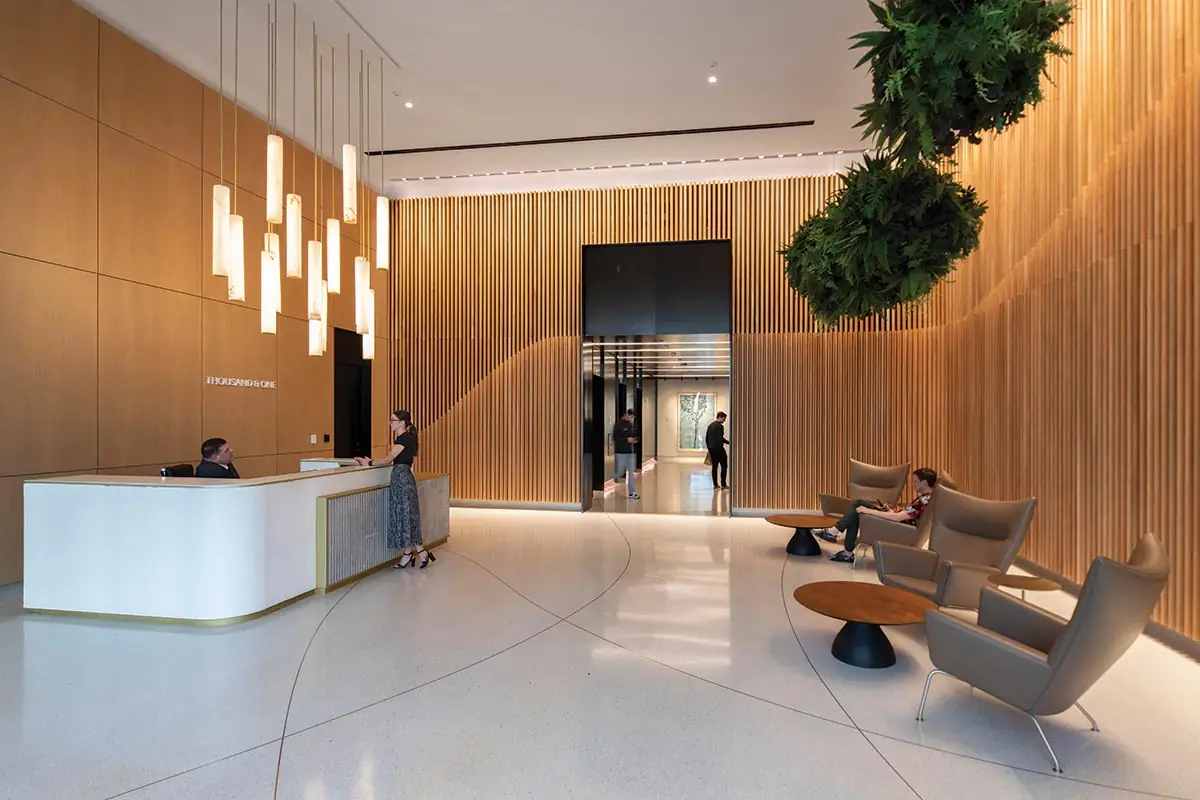
3
The office building Thousand & One (3 & 4) has a precast-concrete facade with a pattern in relief inspired by mangrove roots (5). Photo © Robin Hill
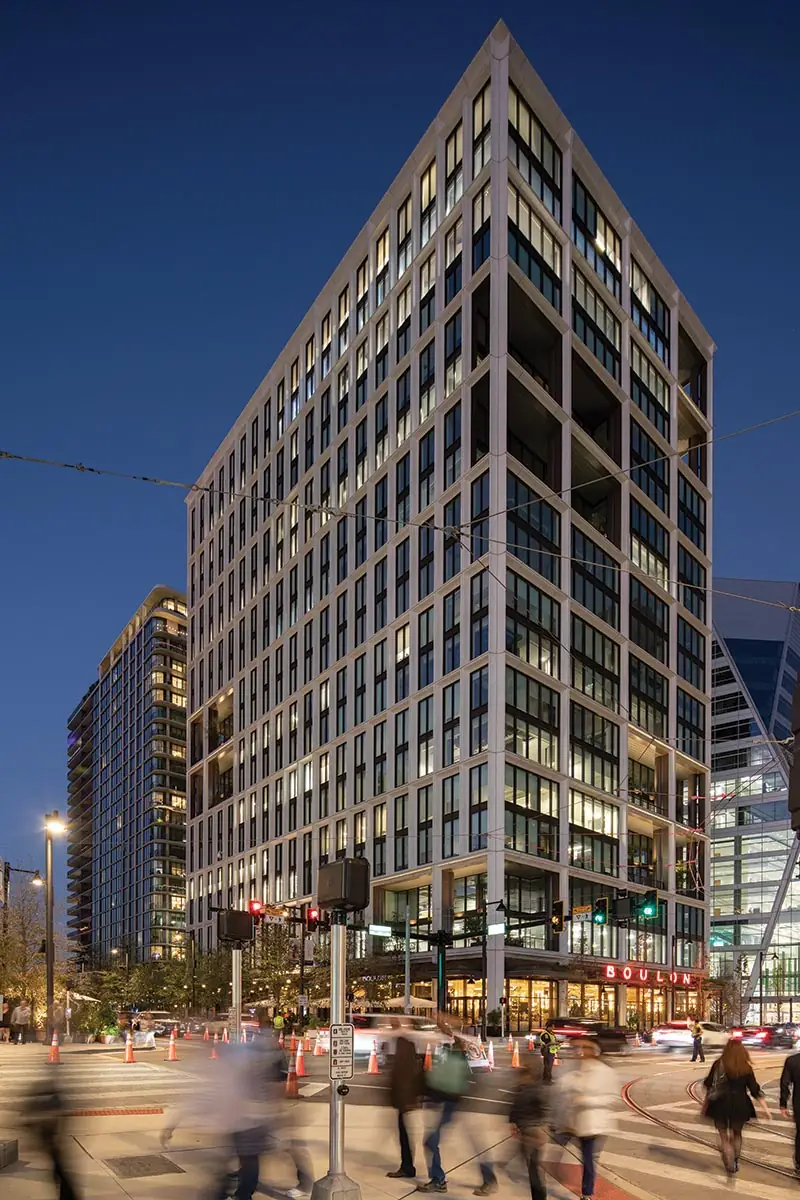
4
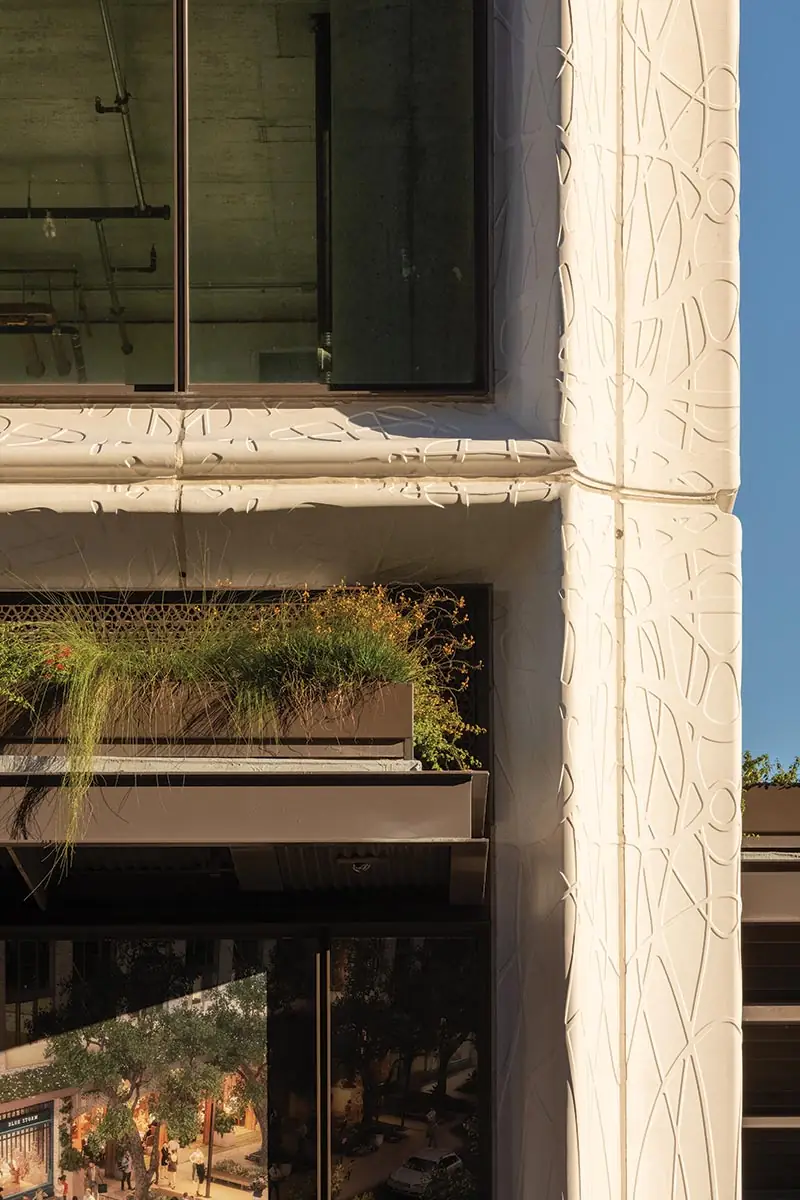
5
Water Street Tampa’s concept of smartly designed buildings set in an urban, people-centric neighborhood appears to be a formula for success. According to SPP’s Brad Cooke, senior vice president of development, the office space at Thousand & One is nearly fully committed and is “achieving the highest rents ever recorded in the Tampa Bay region.” And, he says, its residential buildings also “continue to perform at a robust pace.”
Local news outlets have reported that Vinik sold his share of Water Street Tampa to Cascade in late June. But the sale does not seem to have dampened the development’s momentum. Planning for the next phase of Water Street Tampa is under way, according to SPP, with 2027 as the target date for full build-out, when the neighborhood will encompass 9 million square feet of commercial, residential, hospitality, and cultural space.
Click plans to enlarge
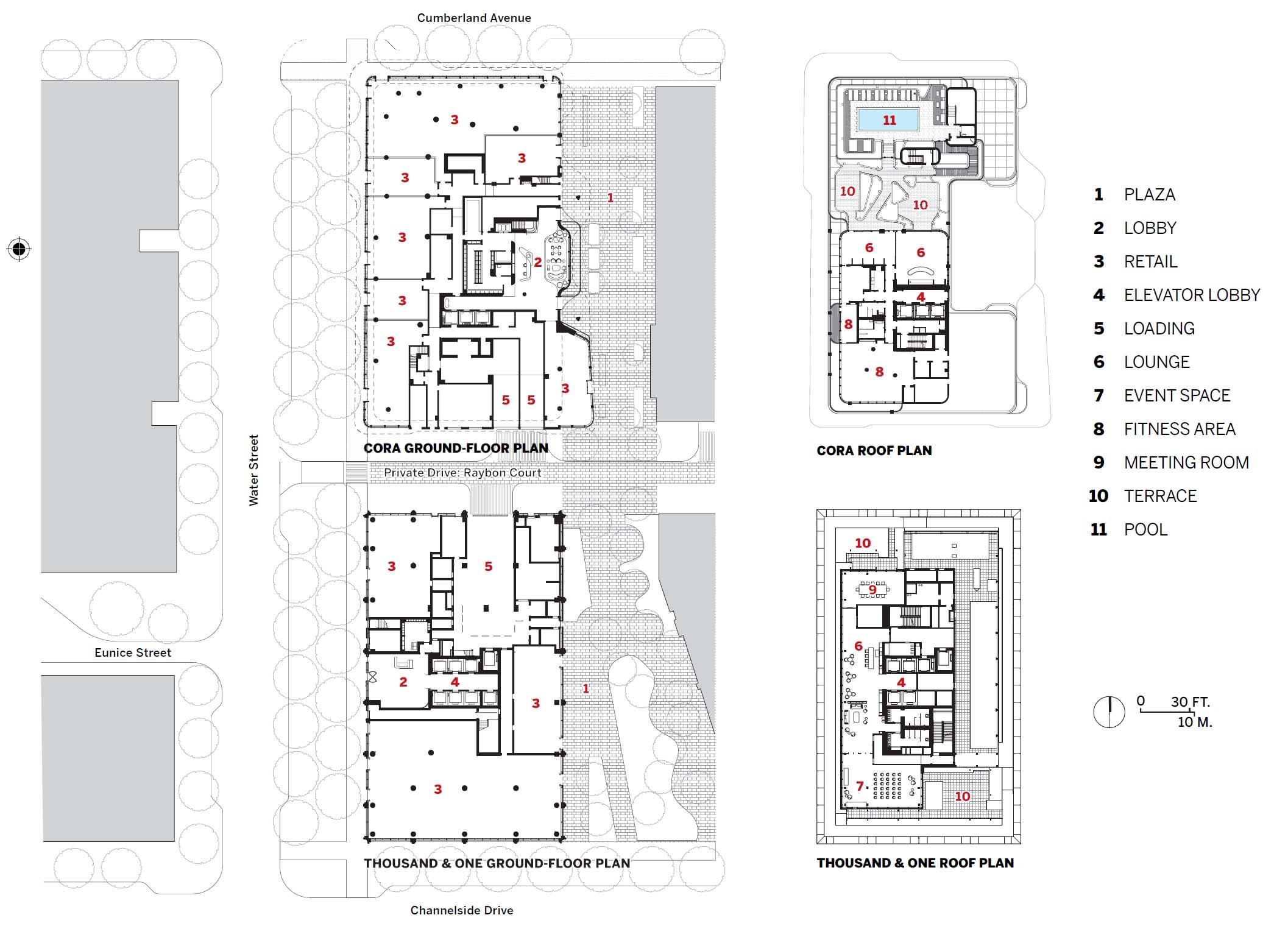
Click detail to enlarge
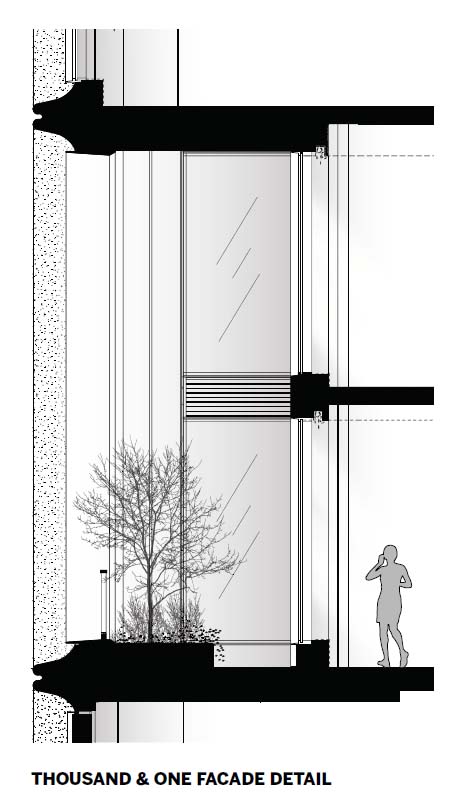
Read about other office projects from the August 2023 issue.
Cora Credits
Architect:
COOKFOX Architects — Rick Cook, founding partner; Darin Reynolds, partner in charge; Zach Craun, project architect
Architect of Record:
O’Donnell Dannwolf & Partners Architects
Consultants:
DeSimone Consulting Engineers (structural), Feller P.E. (m/e/p), Stantec (civil), Future Green Studio, Reed Hilderbrand, EDSA (landscape), Office for Visual Interaction (lighting)
General Contractor:
Moss & Associates
Client:
Strategic Property Partners
Size:
402,000 square feet
Cost:
$114.4 million (construction)
Completion Date:
October 2021
Sources
Windows:
United Glass Systems
Thousand & One Credits
Architect:
COOKFOX Architects — Rick Cook, founding partner; Darin Reynolds, partner in charge; Patricia Lozano, project architect
Architect of Record:
HOK
Consultants:
DeSimone Consulting Engineers (structural); JB&B (m/e/p), Stantec (civil), Nelson Byrd Woltz Landscape Architects (landscape); Lightbox (lighting)
General Contractor:
Coastal Construction
Client:
Strategic Property Partners
Size:
404,000 square feet
Cost:
$105.6 million (construction)
Completion Date:
October 2021
Sources
Precast:
Stabil Concrete
Metal Panels:
Reynobond




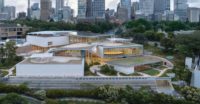

Post a comment to this article
Report Abusive Comment